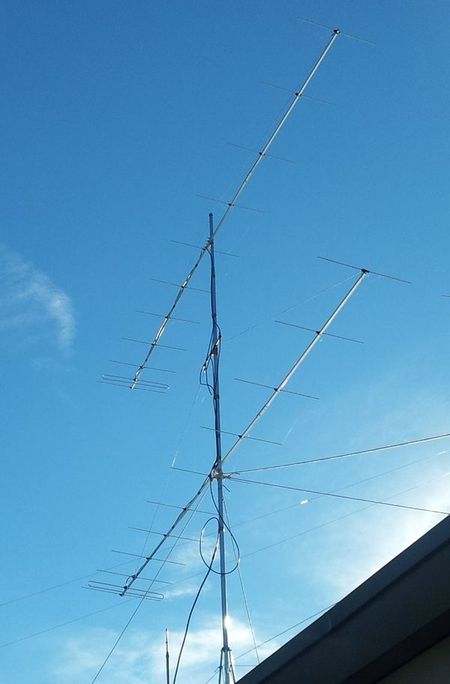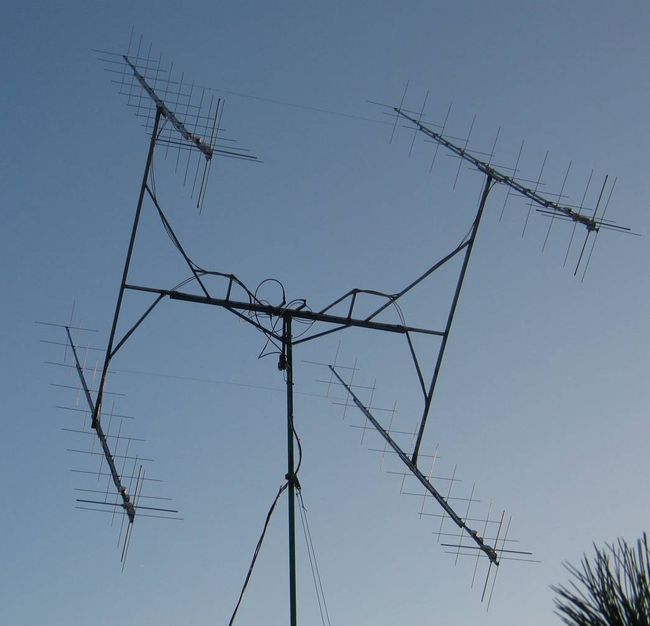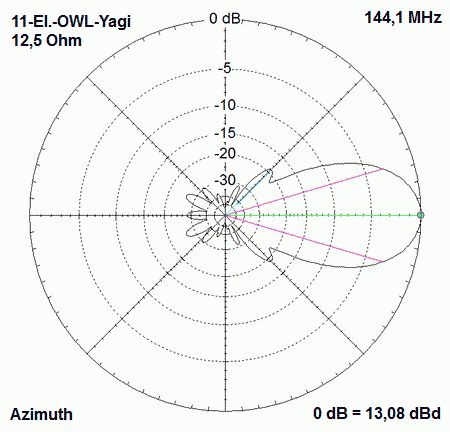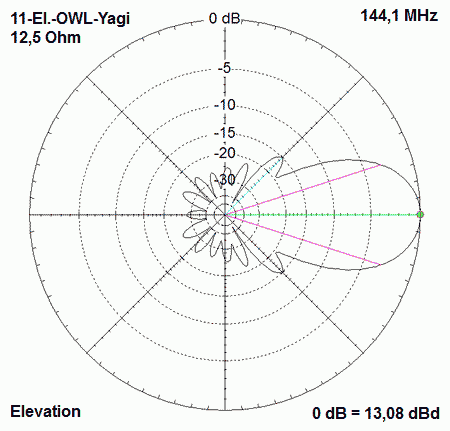 |
Low Noise Optimized Wideband-12,5-Ohm- 11-El.-EME-Yagi
Boomlength 2,9 lambda = 6,10 m Gain 13,08 dBd F/R = 24 dB G/T for a 4x11-El.-EME-Group -2,48 dB at 144,1 MHz Bandwidth SWR<= 1,1 from 144,0-145,1 MHz For stacking distances see the extract of the VE7BQH-list down. There you can make a comparison with other Yagis, too.
The Yagis left built by Javier, EA2TO for Clubstation EA2RCA
|




